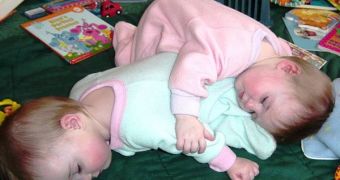Giving birth to twins is a relatively rare phenomenon, in that it does not occur in half of the births around the globe or more. And when many twin births happen in the same, small village in a certain country, India, to be precise, researchers start wondering as to what the causes for this might be. According to a news report released today, more than 230 pairs of twins were born in the Indian village of North Kerala, where only 15,000 people regularly live. Statistics show that the number is four times larger than what would be expected from a village of this size, LiveScience reports.
The Director of Obstetrics at St. Luke's Hospital and Health Network, in Pennsylvania, the United State argues that the large number of twins even exceeds the current worldwide trend, which sees more multiple births than ever before. James Airoldi, however, adds that this particular case could be an extensive manifestation of the tendency we see at the global scale. He also highlights the fact that the number of multiple births taking place in the US between 1980 and 2003 has increased by more than 65 percent, which is very much for only two decades, Reuters informs.
During the same time frame, the number of multiple births, involving triplets or even more children born at once, has increased by more than 400 percent, statistics show. The National Center for Health Statistics (NCHS) reveals that, at this time, about 3 percent of all babies born in America come from multiple births. In most of these cases, there are only two children born (twins) but the number of triplets is on a steady rise as well. One possible explanation could be a larger number of women turning to artificial insemination, which is known to carry a higher chance of multiple children.
Airoldi says that, in order to unlock the Indian mystery, researchers will need to know a lot more data about the conditions in which mothers giving birth to twins are. He also says that knowing what types of twins the children are – fraternal or identical – could help solve the situation. “When these twins were conceived, what was the age of the mom? If you had some environmental issue that drove down their estrogen levels and made their FSH levels go up that would increase the risk of fraternal twins,” he concludes.

 14 DAY TRIAL //
14 DAY TRIAL //